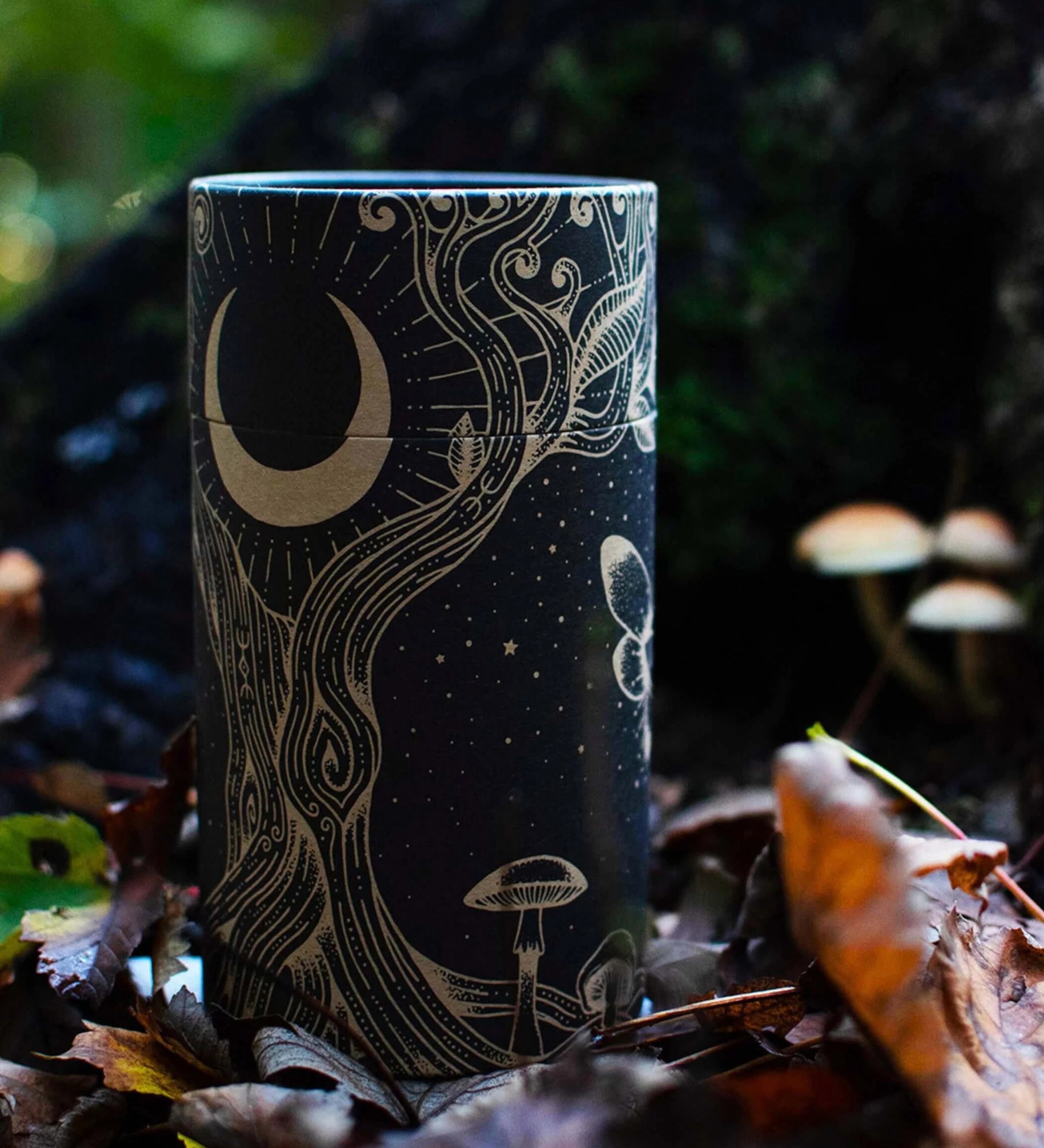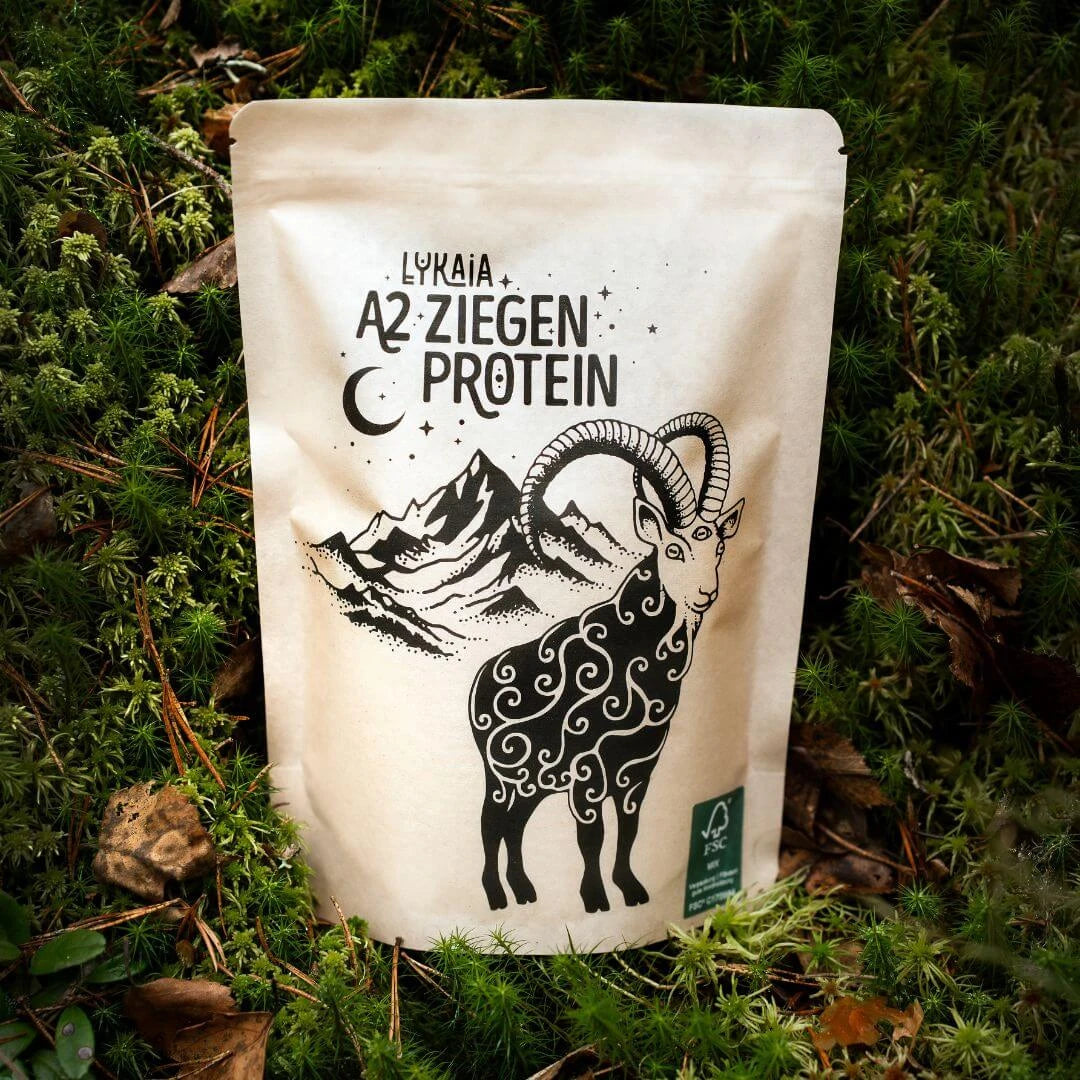How Cordyceps boosts your performance

We are aware that there is absolutely no shortage of exuberant descriptions and claims in the NEM scene. When it comes to the Chinese caterpillar fungus (Cordyceps), it is by no means an exaggeration to say that it is the most fascinating and physiologically most powerful mushroom of all, because its medicinal effects are extensive:
The effect of Cordyceps
- can increase testosterone
- can improve endurance
- stimulates blood circulation and metabolism
- has a blood sugar lowering effect
- has antidepressant effects
- modulates the immune system
- promotes cognitive abilities
Doped Yaks: The Discovery of Cordyceps
The term "magical" is absolutely appropriate here, not because the mushroom causes hallucinations, but because the story of its discovery is quite astonishing.
Cordyceps grows exclusively in the Himalayan region. The people of the Sherpa people who live here regularly travel at altitudes of 3000-5000 m with their typical farm animals, the yaks. Since the air here is very thin, physical activity naturally requires a lot more effort.
One day the locals observed their yaks eating a number of mushrooms sprouting from the ground and the animals' subsequent wild frolicking.
Thanks to their keen powers of observation, the Sherpas are now conducting an experiment. They picked the mushrooms and mixed them into the food of their yaks on one of their high-altitude tours and lo and behold: the draft animals could suddenly be subjected to longer and higher loads. After consuming the mushrooms, they became more powerful and stamina-free.

By the way: Did you know that yaks also produce A2 milk? You can read why the robustness of the Sherpas could be related to the unique protein structure of this milk in our blog article "Why is A2 milk healthier?"
How does the fungus do this?
These observations were investigated in the laboratory and through controlled studies . The cordycepin contained in the mushroom significantly increases the ability and capacity of red blood cells to absorb oxygen. ( 1. )

This is one reason why the fungus is being researched regarding its potential effect on Covid-19 disease , as the virus is known to attack the lungs and blood vessels and thus limit the oxygen supply ( 2 ).
In addition, the increased oxygen uptake is accompanied by increased ATP formation (ATP = the chemical fuel of our cells) and its improved implementation in the mitochondria (the cell power plants) ( 1. ). Anyone who has ever blown into a burnt-out campfire to rekindle it knows the principle. The oxygen supplied feeds the flame and causes it to flare up through the chemical process of oxidation.
“Oxidation” is a chemical reaction in which a so-called “oxidizer” (such as oxygen) accepts electrons from another element (the fuel). The result of this “exothermic reaction” is the heat radiated by fire and visible light. “Exothermic” means that ultimately more energy is released than was supplied from outside.
Since cellular energy production also produces large amounts of harmful free radicals, it becomes clear what role the strong antioxidant properties of the fungus play here (Wang et al. 2009) ( 3 .)
Now comes a whole lot of biochemical information about ATP formation and free radicals. If that's too long for you, click here.
ATP info card:
All life on Earth depends on this tiny molecule. It controls biochemical activity in all living cells. ATP is the main building block of DNA and is produced in the mitochondria. You can think of them as electrochemical batteries that convert the energy from the food you eat and the oxygen you breathe into ATP.
The smallest engine in the world
In a gasoline engine, gasoline and air are combined into a chemical mixture and ignited. This is how the engine converts chemical energy into mechanical energy. Imagine that your food is the gasoline and the air mixture is the oxygen that you breathe in (“air” is only 21% oxygen!). ATP is then the finished explosive mixture. In contrast to an internal combustion engine, your fuel (ATP) is not burned directly, but rather flooded throughout the entire body and is available at any time
Inside the mitochondria there are enzymes that bring together substances that can form a chemical bond with other substances. They convert mechanical energy into chemical energy. These things actually look like small molecular motors:


The stored chemical energy is then converted back into mechanical energy in the muscles.
However, as with the gasoline engine, “waste materials” are also created here, including the so-called “free radicals”.
Info card 2: What are free radicals?
Everyone has heard of antioxidants these days. The term has become an integral part of advertising. As a consumer, it is certainly difficult to always classify what is going on. In general, however, the message “lots of antioxidants = good” seems to have been received by the population. But what is that anyway?
To put it very simply, free radicals are simply toxic waste from energy production in our cells. Kind of like how a nuclear reactor produces radioactive waste.
The theory of free radicals
What we mean by toxic here is that free radicals damage molecules that are important for cell function, such asDNA , RNA and a variety of proteins and lipids . According to the theory, this leads to a constantly growing accumulation of damaged cell components, which in turn causes the complex aging process.
But our body is not stupid and has naturally developed countermeasures. One of our most powerful antioxidants is glutathione , followed by superoxide dismutase . (Superoxide is one of the free radicals that are created during energy production, dismutase is a biochemical term for a "construction worker" i.e. an enzyme. In this case "someone who breaks something down again"
In order to understand how the dismantling works, you first have to deal with the structure.
The formation of reactive oxygen species (free radicals)
Just as gasoline and air are mixed in a combustion engine, glucose is mixed with oxygen in ATP synthesis. From a chemical point of view, the glucose gives up its electrons to the oxygen molecules (greatly simplified).
Ideally, four electrons are always transferred to one oxygen atom. Under certain circumstances, however, only two instead of four electrons are transferred in the electron transport chain. This creates a so-called “radical”, the 2 remaining electrons can move freely and dock anywhere.
In vivo, an estimated 1-3% of the oxygen produced in the mitochondria is converted into radicals. That doesn't sound like much at first, but it can have drastic effects, as an experiment on rats showed. Healthy rats die within 72 hours in an atmosphere of 100% oxygen.
Cells have various enzymes to dispose of toxic oxygen compounds. These enzymes include, for example, the catalases and peroxidases for the elimination of hydrogen peroxide as well as the aforementioned superoxide dismutases (SOD) , which remove the superoxide anion radical. (8th.)
Why are free radicals so keen to steal electrons from other molecules?
A basic principle in chemistry is “the noble gas rule.” This states that atoms in molecules are particularly stable if they have the noble gas configuration, i.e. have the same electron arrangement as noble gases. That's 8 electrons on the outer shell. This configuration is what every molecule strives for.
This is where our antioxidants come in:
These are molecules with free electrons (also called valence electrons) that donate their electron to a free radical. This means that these are “defused” and can no longer harm important cell components.
However, with age the activity of our antioxidants decreases, which is why it is even more important to supply them externally.
However, the free radicals are not completely useless and harmful: our immune system can even stimulate their production for a short time to ward off invaders. Just as free radicals can damage our own cells, they also damage attacker cells. Targeted inflammation also plays a role in muscle building and is controlled by free radicals. That's why it's not a good idea to consume highly effective antioxidants immediately after training.
Now back to the mushroom:
We summarize: The mushroom increases the capacity of red blood cells and thus your oxygen uptake.
You can see what this brings to the table in Chinese Olympians, who have been using Cordyceps as a natural and legal doping agent for a long time. The following effects can be observed:
- Boosts testosterone
- Improves endurance
- Stimulates blood circulation and metabolism
(Hsu et al. (2003) ( 4. )
Other studies show that the use of the mushroom also leads to a significant improvement in heart function and is useful in the treatment of lung diseases such as asthma, bronchitis and COPD (“smoker's lung”). (Donohue et al, 1996, Qu et al. 1995). Cordyceps is also used in the treatment of cardiac arrhythmias and the follow-up treatment of heart attacks.
The effect of Cordyceps on the psyche
With improved blood circulation and oxygen supply, the brain naturally also functions better. This is noticeable through an increased BDNF level. In short, this is a factor in the formation and malleability of neurons. This is noticeable through improvement in depressive moods, increased focus and better learning and memory performance.
A Chinese research team has already been able to demonstrate these effects on mice. The anti-inflammatory properties were also noticeable in this study through the reduction of measurable factors that are related to Alzheimer's. ( 5th & 7th )
We have already written in detail about BDNF, Alzheimer's disease and the functioning of neurons in our article "How Lion's Mane helps you learn" .
This is exactly the reason why we use Cordyceps together with Lion's Mane in our forest coffee. Forest coffee is particularly suitable for beginners in the field who want to get started with the relatively low dosage. For advanced users, we recommend liquid extracts and for cases requiring therapy, we recommend a mycotherapist directly.
Cordyceps appears to counteract aging
In one of the studies ( 5. ), the effect of Cordyceps extract on the activity of age-related enzymes in mice was also measured:
"The results showed that the extract improved the activity of superoxide dismutase, glutathione peroxidase and catalase and reduced the levels of lipid peroxidation and monoamine oxidase activity in the aged mice. The study showed that the extract improved brain function and antioxidant activity enzymes in mice with d-galactose-induced senescence and promote sexual function. All these results suggest that Cordyceps has an anti-aging effect."
Coincidence or intelligent design?
Now you have to let it sink in your mouth what kind of connection this is. The only fungus on earth that is able to increase the oxygen content in the blood also happens to grow exactly where oxygen is in short supply and is needed most by the living beings there due to the topology. It also helps to mitigate the harmful by-products of energy production. Is this still a coincidence or intelligent design of nature?
Cordyceps as a legendary remedy that is thousands of years old
The latter hypothesis has been held in China for thousands of years. The mushroom is considered sacred there. You shouldn't even touch him with your bare hands, especially as a stranger, if you don't want to pay with your life. The mushroom was ultimately deliberately placed on earth by one or more creators. Their eyes must have been correspondingly wide when they saw the first strangers who didn't drop dead after picking them, but left with the precious mushroom.
Cordyceps has always been used almost as a panacea in Tibet and China. It is used against exhaustion, tuberculosis, asthma, back pain and much more.

The Tibetans even soak the dried fruit body in lactic yak milk overnight. Research still needs to be done to determine what effects can be elicited from fermented Cordyceps.
The difficulty of breeding
For a long time, Cordyceps was considered "unbreedable" because it grows in very special conditions. In addition to the right oxygen mixture, it also needs an extremely delicate nutrient composition that can only be found in dead insects.
Cordyceps is also called the “zombie fungus” because it attacks the nervous system of insects and “remotely controls” them. He steers the insect to a suitable place where it dies and then serves as a breeding ground for the fungus , as shown very impressively in the BBC documentary "Planet Earth" (warning, nightmare material).

Cordyceps is also mentioned in the award-winning video game “The Last of Us” as the fictional trigger of a zombie apocalypse.
But don't worry, humans are outside the fungus's prey pattern.
The breakthrough was achieved in 2018 and the first Cordyceps culture was bred on a larger scale. The mushroom can now be cultivated industrially to the highest quality. That's why we're so proud that it's part of our forest coffee.
 Industrially cultivated Cordyceps
Industrially cultivated Cordyceps
"Actually, the West should learn from Asian medicine, in which there is no strict separation between food and medicine." - Jürgen Guthmann
Sources
1. Increased Oxygen Uptake:
- "CordyMax enhances endurance performance and exercise metabolism in mid-age to elderly humans". Shanghai Journal of Preventive Medicine. 20. 367-369, 476. [ source ]
-
Effect of Cs-4 (Cordyceps sinensis) on exercise performance in healthy older subjects: a double-blind, placebo-controlled trial.
https://www.ncbi.nlm.nih.gov/pmc/articles/PMC3110835/
- Cordyceps militaris Improves Tolerance to High-Intensity Exercise After Acute and Chronic Supplementation. https://pubmed.ncbi.nlm.nih.gov/27408987/
2. Covid-19
-
Kaymakcı, Mehmet & Güler, Eray. (2020). Promising Potential Pharmaceuticals from the Genus Cordyceps for COVID-19 Treatment: A Review Study. Bezmialem Science. https://www.researchgate.net/publication/347738030_Promising_Potential_Pharmaceuticals_from_the_Genus_Cordyceps_for_COVID-19_Treatment_A_Review_Study
3. Antioxidants
- Wang Y et al. (2009) Structural Determination and Antioxidant Activity of a Polysaccharide from the Fruiting Bodies of Cultured Cordyceps sinensis , AM J Chin Med 2009;37(5): 977-989
4. Testosterone
- In vivo and in vitro stimulatory effects of Cordyceps sinensis on testosterone production in mouse Leydig cells. https://pubmed.ncbi.nlm.nih.gov/12899935/
-
Mizuno, Takashi. “Medicinal Effects and Utilization of Cordyceps" International Journal of Medicinal Mushrooms 1 (1999): 251-261. (https://bioupdate.org/cordyceps/1999-01-cordyceps-mizuno-takashi-et-al-medicinal-effects / )
5. Counteracts the aging process
- Ji, D.-B., Ye, J., Li, C.-L., Wang, Y.-H., Zhao, J. and Cai, S.-Q. (2009), Antiaging effect of Cordyceps sinensis extract. Phytother. Res., 23: 116-122. https://doi.org/10.1002/ptr.2576
6. Blood sugar lowering
- Zhang, G., Huang, Y., Bian, Y. et al. Hypoglycemic activity of the fungi Cordyceps militaris , Cordyceps sinensis , Tricholoma mongolicum , and Omphalia lapidescens in streptozotocin-induced diabetic rats. Appl Microbiol Biotechnol 72 , 1152–1156 (2006). https://doi.org/10.1007/s00253-006-0411-9
-
Zhu JS, Halpern GM, Jones K. "The scientific rediscovery of an ancient Chinese herbal medicine: Cordyceps sinensis: part I." J Altern Complement Med. 1998 Case;4(3):289-303. doi: 10.1089/acm.1998.4.3-289. PMID: 9764768. https://pubmed.ncbi.nlm.nih.gov/9764768/
- Especially for Cordyceps (Yoshikawa et al. 2004): Yoshikawa N, Nakamura K, Yamaguchi Y, Kagota S, Shinozuka K, Kunitomo M. "Antitumor activity of cordycepin in mice". https://pubmed.ncbi.nlm.nih.gov/15649290/
7. Effect on depression
- Antidepressant-Like Effect of Cordyceps sinensis in the Mouse Tail Suspension Test, Biological and Pharmaceutical Bulletin, 2007 https://doi.org/10.1248/bpb.30.1758 , https://www.jstage.jst.go.jp/article/ bpb/30/9/30_9_1758/_article/-char/en
- Holliday et al. (2005) Cordycep, Encyclopedia of Dietary Supplements, Taylor and Francis Publishing, 1-13. https://www.academia.edu/5417001/Cordyceps_Encyclopedia_of_Dietary_Supplements_Paul_Coates_of_the_National_Institutes_of_Health
8. Antioxidants & Free Radicals
- Kirkinezos, IG; Moraes, CT ( 2001 ): Reactive oxygen species and mitochondrial diseases . In: Cell & Developmental Biology . 12 449–457 10.1006/scdb.2001.0282
- Crapo, JD ( 1975 ): Superoxide Dismutase and Tolerance to Pulmonary Oxygen Toxicity . In: Chest . 67 39-40
0 comments







